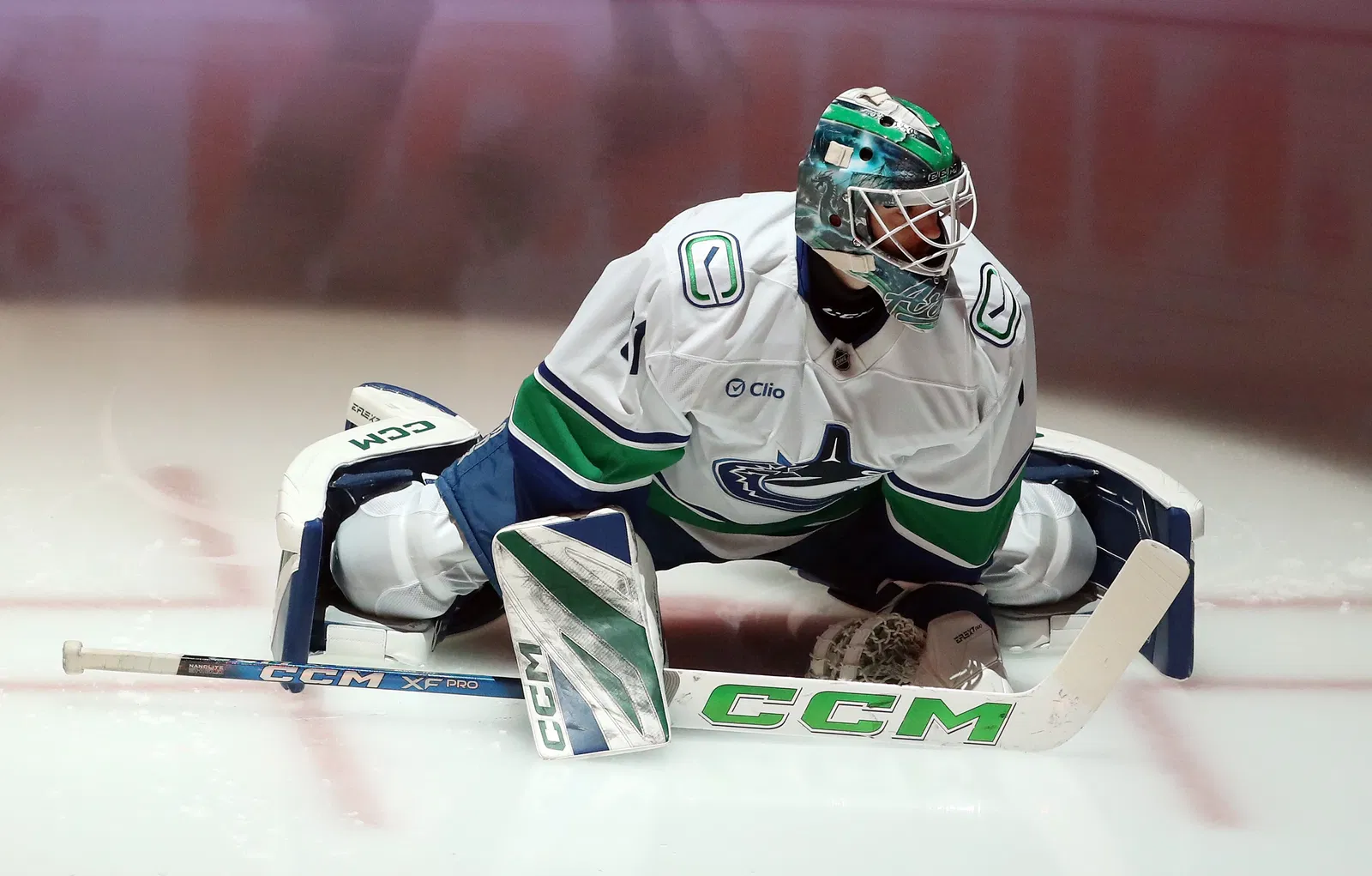The Pittsburgh Penguins have bolstered their goaltending depth by acquiring Arturs Silovs from the Vancouver Canucks in exchange for forward Chase Stillman and a 2027 fourth-round pick. Silovs, coming off a Calder Cup MVP performance, is poised to challenge Tristan Jarry for starts as Pittsburgh seeks stability in net.
This trade reshapes both franchises’ futures, with Vancouver gaining a reclamation project in Stillman while Pittsburgh secures a promising backup. The move raises questions about Silovs’ NHL readiness and Stillman’s fit in Vancouver’s crowded forward group.
- The Pittsburgh Penguins acquired Arturs Silovs from Vancouver, addressing their need for a reliable backup behind Tristan Jarry after his standout Calder Cup performance.
- Silovs’ AHL playoff dominance (.931 SV%) positions him as a potential long-term solution for Pittsburgh, especially with Jarry entering a contract year.
- Vancouver receives Chase Stillman and a 2027 4th-round pick, clearing their goalie logjam behind Demko/Lankinen while adding developmental depth.
- The trade balances risk/reward for both teams: Pittsburgh gains upside in net, while Vancouver capitalizes on an expendable asset.
Arturs Silovs Trade to Penguins: Analyzing His Role as Jarry’s Backup

The Pittsburgh Penguins’ acquisition of Arturs Silovs from the Vancouver Canucks signifies a calculated effort to stabilize their goaltending future. The 24-year-old Latvian netminder, fresh off a Calder Cup MVP performance, now faces the challenge of backing up Tristan Jarry in a high-pressure market. Silovs’ .931 playoff save percentage with Abbotsford demonstrates his ability to perform under scrutiny—a trait Pittsburgh desperately needs after last season’s inconsistent backup performances.
What makes this move intriguing is the stylistic contrast between Silovs and Jarry. While Jarry relies on positional efficiency, Silovs brings athleticism and explosive lateral movement. This dichotomy could benefit Pittsburgh’s system, especially when facing opponents with diverse offensive strategies. The Penguins’ coaching staff will likely deploy Silovs in 20-25 games initially, with potential for increased workload should Jarry struggle or face injuries.
The underlying narrative here involves Pittsburgh’s long-term planning. With Jarry’s contract expiring after 2025-26, Silovs represents both insurance and potential succession. His AHL dominance suggests NHL starter upside, but the transition to Mike Sullivan’s system—which demands quick puck handling and communication with defensemen—will determine his ceiling.

Key Factors in Silovs’ Transition
- Workload Management: How Sullivan distributes starts between established veteran and rising star
- Defensive Chemistry: Silovs’ adjustment to Pittsburgh’s active D-corps (Letang, Karlsson, etc.)
- Performance Metrics: Tracking high-danger save % against East Division opponents
Vancouver’s Calculated Gamble: Evaluating the Chase Stillman Return


In trading Silovs, the Canucks acquired former first-round pick Chase Stillman—a project with untapped potential. The 22-year-old winger brings physicality (147 hits in 83 AHL games) and penalty-killing versatility to Vancouver’s pipeline. While his NHL production has been limited (3 goals in 38 games), Vancouver’s development staff has excelled at refining similar raw talents like Dakota Joshua and Nils Höglander.
The inclusion of a 2027 fourth-round pick adds intrigue. In an era where draft capital is currency, Vancouver GM Patrik Allvin continues demonstrating patience—a stark contrast to previous regimes. This trade follows their pattern of accumulating mid-round picks while leveraging organizational depth (Demko/Lankinen tandem) into future assets.



Stillman’s Projected Development Path
| Season | Likely Role | Key Development Focus |
|---|---|---|
| 2024-25 | Top-six AHL winger | Offensive zone positioning |
| 2025-26 | NHL/AHL swingman | PK responsibilities |
The Calder Cup Effect: How Silovs’ Championship DNA Translates to Pittsburgh
Silovs’ 2024 Calder Cup run wasn’t just statistically impressive—it revealed championship intangibles. His 5-1 record in elimination games and .947 save percentage during the finals demonstrate clutch performance under fire. These attributes align perfectly with Pittsburgh’s “win-now” mentality surrounding Crosby and Malkin’s twilight years.
Advanced metrics from his AHL dominance highlight particular NHL-transferable skills:
- Rebound Suppression: 2.3 second-chance goals allowed per 60 (league avg: 3.1)
- Breakaway Stopping: 78% success rate against penalty shots
- Third Period Resilience: .928 SV% when facing 30+ shots


Pittsburgh’s Goaltending Blueprint: Short-Term Fix or Long-Term Vision?
The Penguins’ crease situation now presents fascinating possibilities. Jarry remains the undisputed starter for 2024-25, but Silovs’ arrival triggers several strategic questions:
1. Tandem Potential: Could Pittsburgh emulate Vegas’ 2022 approach with Lehner/Thompson—equal starts to keep both fresh?
2. Expansion Draft Implications: If Silovs excels, do they protect him over Jarry in 2026?
Historical data suggests promising AHL goalies typically need 1.5-2 NHL seasons before reaching starter capability. Pittsburgh’s development timeline interestingly aligns with Crosby’s current contract (through 2026-27).
Projected Goalie Deployment
- Conservative Approach: Jarry (58 starts), Silovs (24)
- Merit-Based System: Performance dictates split after December



Latvian Legacy: How Silovs Fits NHL’s Growing European Goaltending Wave
Silovs becomes the third Latvian goalie to play for Pittsburgh (following Pēteris Skudra and Elvis Merzlikins). His success continues a remarkable trend of European netminders thriving in today’s NHL:
| Nationality | 2023-24 Starters | SV% Rank |
|---|---|---|
| Latvian | 2 | 5th |
| Swedish | 7 | 3rd |
Silovs’ butterfly-hybrid style—combining Latvian technical fundamentals with North American aggressiveness—could become Pittsburgh’s secret weapon against divisional rivals like Washington and Carolina who struggle against unorthodox goaltending.

Comments